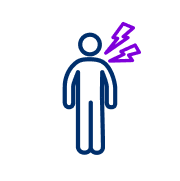
Managing PNH

People with PNH will need regular monitoring to check the progress of their disease and their response to treatment.1,2
Learning about PNH and how it affects your body is an important step towards managing the condition. It will also help you better understand your treatment. Learning how to keep track of your laboratory test results will help you to understand more about how PNH affects your body.
Learning about PNH and how it affects your body is an important step towards managing the condition. It will also help you better understand your treatment. Learning how to keep track of your laboratory test results will help you to understand more about how PNH affects your body.



Some useful websites are PNH Global Alliance, EURORDIS, AAMDSIF and European Network for Rare and Congenital Anaemias (ENERCA).
EURORDIS, European Organisation for Rare Diseases; AAMDSIF, Aplastic Anemia and MDS International Foundation